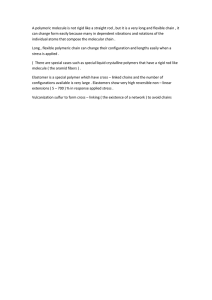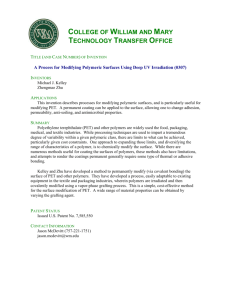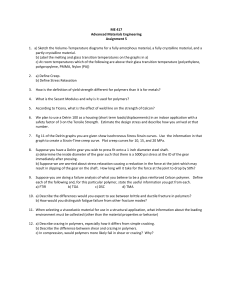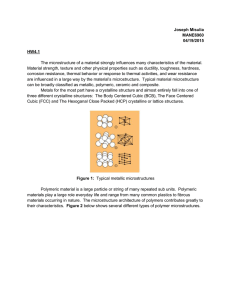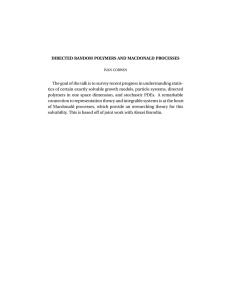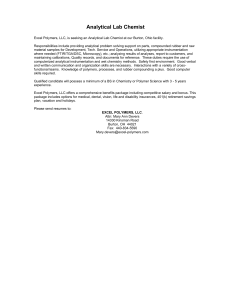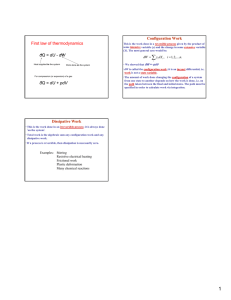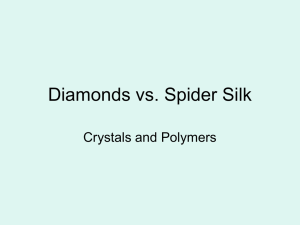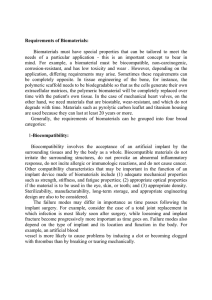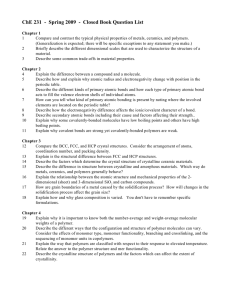Rubber Elasticity
advertisement
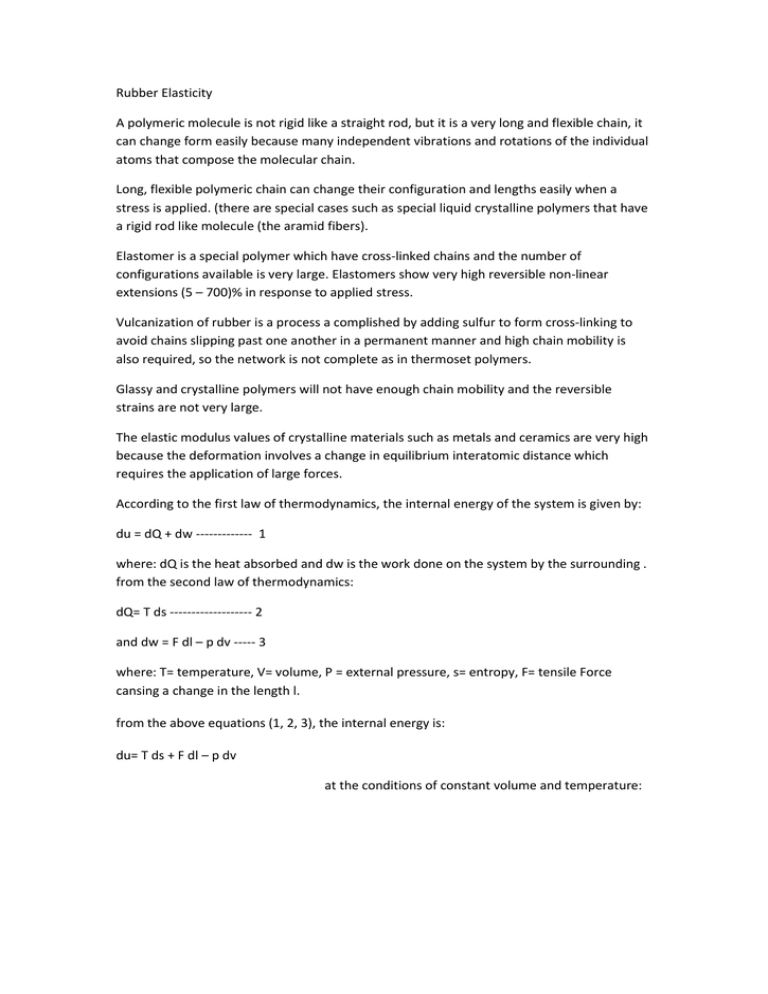
Rubber Elasticity A polymeric molecule is not rigid like a straight rod, but it is a very long and flexible chain, it can change form easily because many independent vibrations and rotations of the individual atoms that compose the molecular chain. Long, flexible polymeric chain can change their configuration and lengths easily when a stress is applied. (there are special cases such as special liquid crystalline polymers that have a rigid rod like molecule (the aramid fibers). Elastomer is a special polymer which have cross-linked chains and the number of configurations available is very large. Elastomers show very high reversible non-linear extensions (5 – 700)% in response to applied stress. Vulcanization of rubber is a process a complished by adding sulfur to form cross-linking to avoid chains slipping past one another in a permanent manner and high chain mobility is also required, so the network is not complete as in thermoset polymers. Glassy and crystalline polymers will not have enough chain mobility and the reversible strains are not very large. The elastic modulus values of crystalline materials such as metals and ceramics are very high because the deformation involves a change in equilibrium interatomic distance which requires the application of large forces. According to the first law of thermodynamics, the internal energy of the system is given by: du = dQ + dw ------------- 1 where: dQ is the heat absorbed and dw is the work done on the system by the surrounding . from the second law of thermodynamics: dQ= T ds ------------------- 2 and dw = F dl – p dv ----- 3 where: T= temperature, V= volume, P = external pressure, s= entropy, F= tensile Force cansing a change in the length l. from the above equations (1, 2, 3), the internal energy is: du= T ds + F dl – p dv at the conditions of constant volume and temperature:
